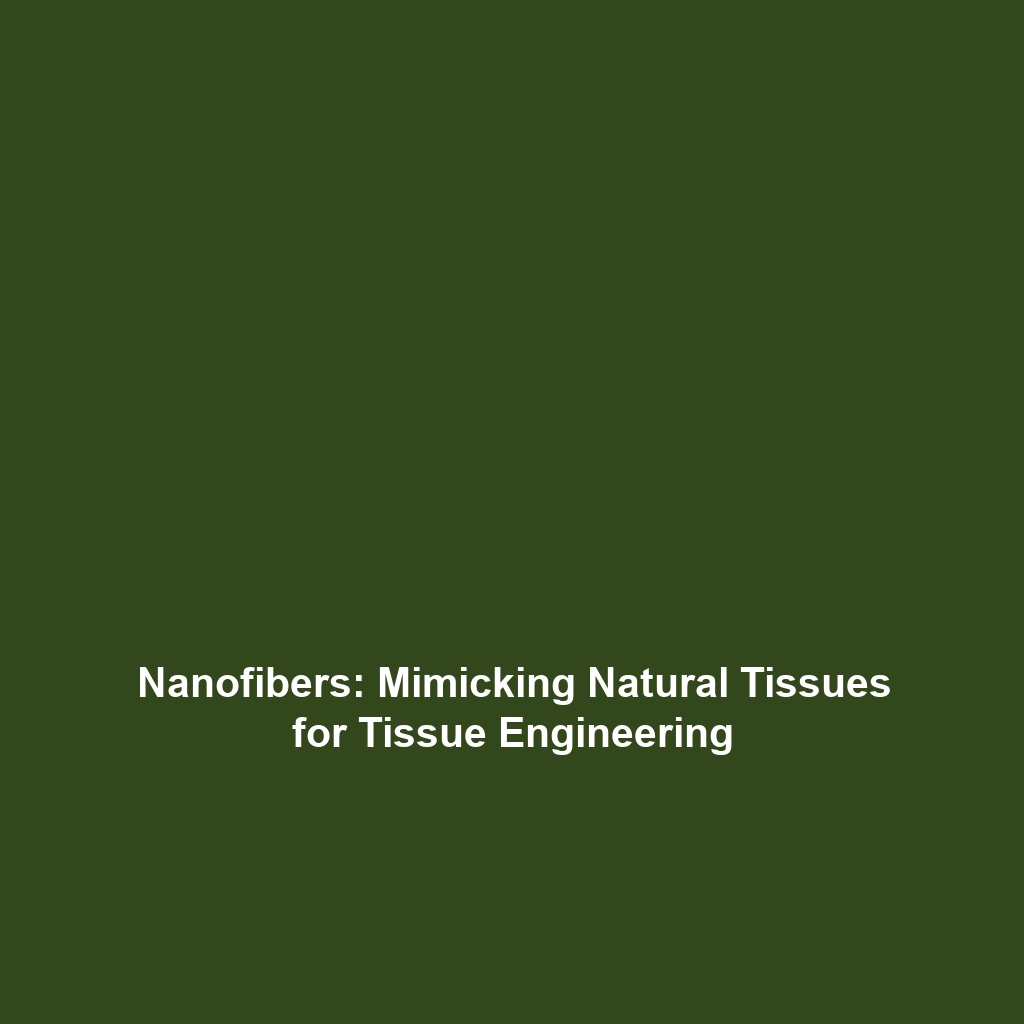Tissue Engineering: Creating Scaffolds for Regenerative Medicine
Introduction
Tissue engineering represents a groundbreaking approach in regenerative medicine, where advanced nanomaterials play a crucial role in developing effective scaffolds. These scaffolds are designed to support cellular growth and tissue regeneration, thus offering hope for repairing damaged tissues and organs. With the integration of nanotechnology, the potential for innovative solutions in clinical applications is expanding significantly. The emerging field not only seeks to address tissue loss but also emphasizes the importance of biocompatibility and functionality, making it a critical area of research in advanced nanomaterials.
Key Concepts
Understanding Tissue Engineering
Tissue engineering involves the combination of cells, engineering materials, and suitable biochemical factors to enhance the repair or regeneration of tissues. The fundamental principles include:
- Scaffold Design: Scaffolds must mimic the natural extracellular matrix, promoting cell attachment and proliferation.
- Biomaterials: Use of biomaterials such as hydrogels and polymers that are compatible with biological tissues.
- Mechanobiology: Understanding how mechanical forces influence cellular behavior and tissue development.
Role of Advanced Nanomaterials
In the context of tissue engineering, advanced nanomaterials provide unique properties such as increased surface area, enhanced mechanical strength, and improved bioactivity. Their nanoscale dimensions enable better integration with biological systems, setting the foundation for innovative scaffold designs.
Applications and Real-World Uses
There are several significant real-world applications of tissue engineering in regenerative medicine, particularly utilizing advanced nanomaterials:
- Bone Regeneration: Nanostructured scaffolds made from calcium phosphates demonstrate effective bone healing properties.
- Cartilage Repair: Hydrogel scaffolds infused with nanoparticles promote the regeneration of articular cartilage.
- Vascular Engineering: Nanofibrous scaffolds are used to create vascular grafts, improving blood flow in damaged vessels.
Current Challenges
Despite the promising advancements, several challenges persist in tissue engineering, particularly regarding scaffolds for regenerative medicine:
- Scaffold Biodegradation: Achieving an ideal degradation rate that matches tissue growth remains challenging.
- Vascularization: Ensuring scaffolds encourage the formation of vascular networks to supply nutrients and remove waste.
- Immune Response: Addressing potential adverse immune reactions to implanted scaffolds is crucial for success.
Future Research and Innovations
The field of tissue engineering is on the cusp of significant advancements, driven by continued research and technology innovations. Key areas of focus include:
- 3D Bioprinting: This technology allows precise control over scaffold architecture and composition, paving the way for custom tissue solutions.
- Smart Scaffolds: Incorporating stimuli-responsive materials that change properties in response to environmental conditions.
- Gene Editing: Utilizing CRISPR technology to enhance cell functions and improve tissue integration.
Conclusion
In summary, tissue engineering and the creation of scaffolds using advanced nanomaterials is a rapidly evolving field that holds immense potential for regenerative medicine. Addressing current challenges and exploring innovative research pathways could lead to transformative solutions for tissue repair and regeneration. For more information, consider exploring topics such as Applications of Advanced Nanomaterials and Challenges in Regenerative Medicine.

